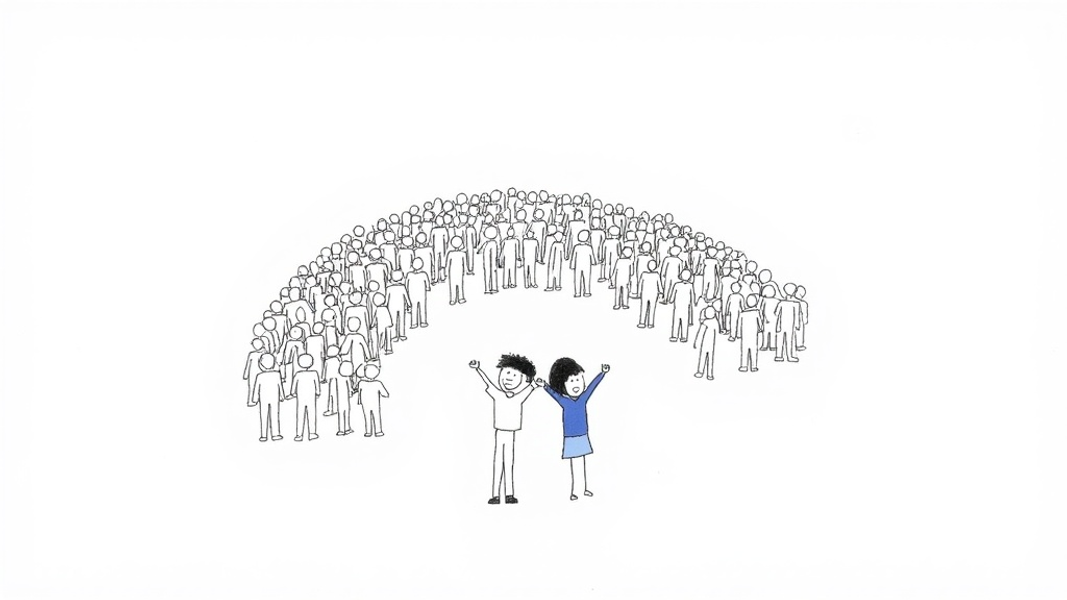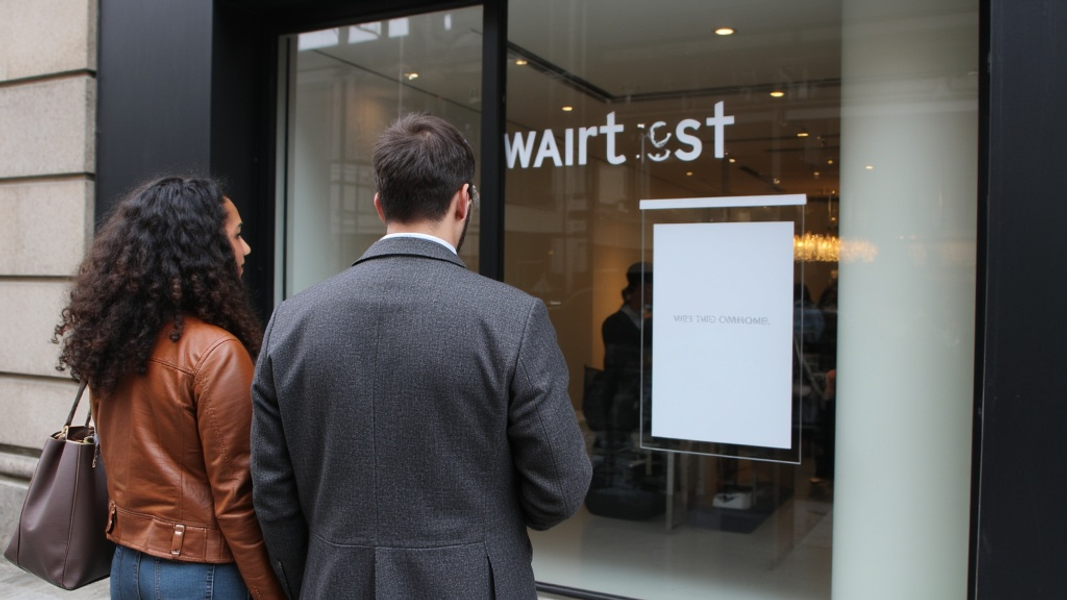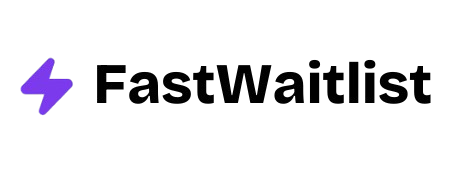
Have you ever wondered how some products seem to sell out in minutes, with eager customers lining up to buy? The secret often lies in a well-crafted waitlist. Building a waitlist isn't just about collecting email addresses. It's a powerful tool that can create buzz, gauge interest, and set the stage for a successful launch. In this guide, we'll walk you through the steps to create a waitlist that not only grows your audience but also turns that audience into excited customers ready to buy.
What is a Waitlist?
A waitlist is a list of people who have shown interest in a product or service before it's available. It's like a line at a popular restaurant, but for your business. When you make a waitlist, you're giving people a chance to say "I want this!" before you even start selling.
Why Waitlists Matter
Waitlists do more than just hold names. They help businesses in big ways. First, they show how many people want what you're offering. This can help you plan better. If lots of people join your waitlist, you know there's a good market for your idea.
Waitlists also create excitement. When people join a waitlist, they feel special. They're part of an exclusive group that gets first dibs on something new. This excitement can spread, making more people want to join.
For customers, waitlists are great too. They don't have to keep checking back to see if something is for sale. Instead, they sign up once and know they'll be told when it's ready. This makes them feel valued and keeps them from forgetting about your product.
Types of Launches That Benefit from Waitlists
Not every business needs a waitlist, but many can use them to boost their success. Let's look at some types of launches where waitlists work well.
Product Launches
New products often gain a lot from waitlists. Whether it's a new gadget, a book, or a clothing line, a waitlist can build hype. Take Apple for example. When they release a new iPhone, people often join waitlists months in advance. This not only ensures sales but also creates a buzz that attracts even more customers.
Service Offerings
Services can use waitlists too. Imagine a popular hairstylist opening up bookings for a new salon. A waitlist lets them gauge interest and fill up their schedule quickly. It also makes clients feel special, knowing they've secured a spot with a sought-after professional.
Events and Courses
Waitlists work wonders for events and courses. They help organizers plan better by showing how many people are interested. For online courses, waitlists can be especially powerful. They allow course creators to build a group of eager students before the course even starts.

How to Create a Successful Waitlist in 8 Steps
Now that we know why waitlists are so useful, let's dive into how to make one that works. Follow these steps to create a waitlist that not only grows but also turns into real sales.
1. Define Your Goals
Before you start building your waitlist, think about what you want to achieve. Are you trying to see if people like your idea? Do you want to get a certain number of sign-ups? Maybe you're hoping to make a big splash when you launch. Whatever your goals are, write them down. This will help you make choices later on.
For example, if your goal is to test interest in a new type of running shoe, you might aim for 1,000 waitlist sign-ups. This clear goal will guide your efforts and help you measure success.
2. Create a Landing Page
Your landing page is where people will sign up for your waitlist. It needs to be clear, exciting, and easy to use. Here's what to include:
- A catchy headline that tells people what they're signing up for
- A short description of your product or service
- Benefits of joining the waitlist
- A simple form to collect names and email addresses
Make sure your page looks good on phones too. Many people will visit from their mobile devices.
3. Incentivize Sign-ups
People need a reason to join your waitlist. Offer something special to those who sign up early. This could be:
- Early access to your product
- A discount on their first purchase
- Exclusive content or features
For instance, if you're launching a new app, you could offer waitlist members a free month of premium features. This gives people a clear reason to sign up now instead of waiting.
4. Promote Your Waitlist
Once your landing page is ready, it's time to spread the word. Use all the channels you have:
- Share on social media platforms like Instagram and Twitter
- Email your existing customers or subscribers
- Write blog posts about your upcoming launch
- Consider paid ads to reach new audiences
Don't just post once. Keep talking about your waitlist regularly. The more you mention it, the more people will join.
5. Set Up a Welcome Sequence
When someone joins your waitlist, don't leave them hanging. Set up an email sequence that starts right after they sign up. This should include:
- A thank you message
- What they can expect while on the waitlist
- Any promised incentives
- A way to share the waitlist with friends
This keeps people excited and engaged from the moment they join.
6. Nurture Your Subscribers
Keeping your waitlist members interested is key. Send regular updates about your progress. Share behind-the-scenes looks at your product or service. Ask for feedback or opinions. This makes people feel involved and keeps your launch on their minds.
For example, if you're writing a book, you could share snippets of chapters or ask waitlist members to vote on cover designs. This involvement creates a connection and makes people more likely to buy when you launch.
7. Monitor and Optimize
Keep an eye on how your waitlist is doing. Look at:
- How many people are signing up each day
- Which promotion methods are working best
- What emails get the most opens and clicks
Use this information to improve. If one type of social media post is getting lots of sign-ups, do more of those. If people aren't opening your emails, try different subject lines.
8. Launch and Convert
When it's time to launch, your waitlist becomes super valuable. These are the people most likely to buy from you. Plan your launch carefully:
- Give waitlist members early access
- Remind them of any special offers you promised
- Create a sense of urgency (like limited time offers)
After your initial launch to the waitlist, open up to the general public. This can create even more buzz as waitlist members start talking about their purchases.

Best Practices for Waitlist Management
Managing your waitlist well can make a big difference in its success. Here are some tips to keep in mind:
Be Clear and Honest
Tell people exactly what they're signing up for. If you're not sure when your product will launch, say so. It's better to be honest than to disappoint people later.
Keep Communication Regular
Set a schedule for updates and stick to it. This could be weekly or monthly, depending on your timeline. Regular communication keeps people engaged and prevents them from forgetting about you.
Make Sharing Easy
Encourage waitlist members to share with their friends. You could offer bonuses for referrals, like moving up the list or getting extra perks. This can help your waitlist grow faster.
Personalize When Possible
Use the information you collect to make your communications more personal. If you know someone is interested in a specific feature, highlight that in your emails to them.
Have a Plan for Launch Day
Decide how you'll handle the launch ahead of time. Will everyone get access at once, or will you stagger it? How will you handle any technical issues? Planning for these things can make your launch smoother.
Case Studies
Let's look at some real examples of businesses that used waitlists effectively.
Robinhood's Million-Person Waitlist
Robinhood, the investment app, built a waitlist of over a million people before they launched. They did this by offering a simple promise: commission-free stock trading. They also gamified the waitlist, letting people move up by referring friends. This created a viral effect, with each new sign-up often bringing in several more.
Monzo's Community-Driven Growth
Monzo, a digital bank in the UK, used a waitlist to build a community around their product. They invited waitlist members to events and asked for their input on features. This made people feel like part of the Monzo team, creating loyal customers before the bank even fully launched.
These examples show how waitlists can do more than just collect names. They can build communities, create viral growth, and shape products to fit what customers really want.
Conclusion
Building a waitlist is a powerful way to launch a product or service. It creates excitement, helps you plan, and gives you a group of ready-to-buy customers. By following the steps and best practices we've covered, you can create a waitlist that not only grows but also supports a successful launch.
Remember, the key is to provide value to your waitlist members. Keep them informed, excited, and feeling special. With the right approach, your waitlist can be the foundation of a thriving business.
Frequently Asked Questions
How long should my waitlist be open?
The length of time your waitlist is open depends on your launch timeline. It could be a few weeks for a small product or several months for a major launch. The key is to keep people engaged throughout the waiting period.
What if my waitlist grows too big?
Having a large waitlist is usually a good problem to have. You can manage it by segmenting your list, offering tiered access, or even closing the waitlist if needed. Just be sure to communicate clearly with everyone who's signed up.
Can I monetize my waitlist?
While it's possible to charge for waitlist access, it's not common. Most businesses find more value in using the waitlist to build interest and gather information. If you do charge, make sure you're offering clear and significant value in return.
How often should I email my waitlist?
There's no one-size-fits-all answer, but a good rule is to email when you have something valuable to share. This might be weekly updates as you get close to launch, or monthly check-ins if your timeline is longer. The key is consistency and providing useful information.
